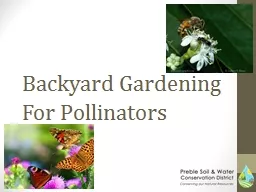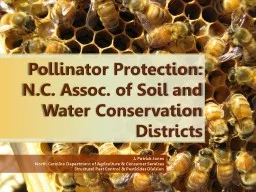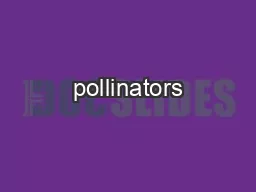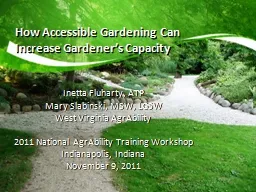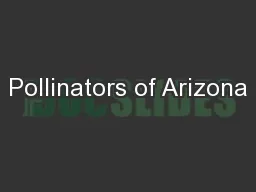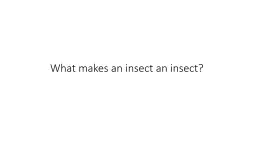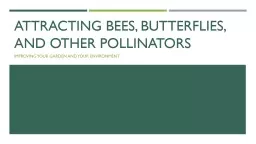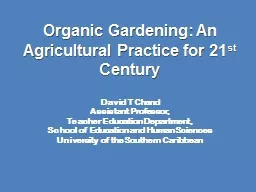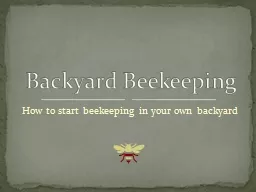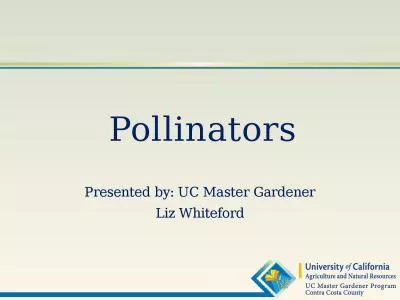PPT-Backyard Gardening For Pollinators
Author : lindy-dunigan | Published Date : 2017-06-23
What Do Pollinators Need Food Shelter Protection From Pesticides Food Providing Pollen and Nectar Nectar energy and amino acids Pollen protein Providing Pollen
Presentation Embed Code
Download Presentation
Download Presentation The PPT/PDF document "Backyard Gardening For Pollinators" is the property of its rightful owner. Permission is granted to download and print the materials on this website for personal, non-commercial use only, and to display it on your personal computer provided you do not modify the materials and that you retain all copyright notices contained in the materials. By downloading content from our website, you accept the terms of this agreement.
Backyard Gardening For Pollinators: Transcript
Download Rules Of Document
"Backyard Gardening For Pollinators"The content belongs to its owner. You may download and print it for personal use, without modification, and keep all copyright notices. By downloading, you agree to these terms.
Related Documents

